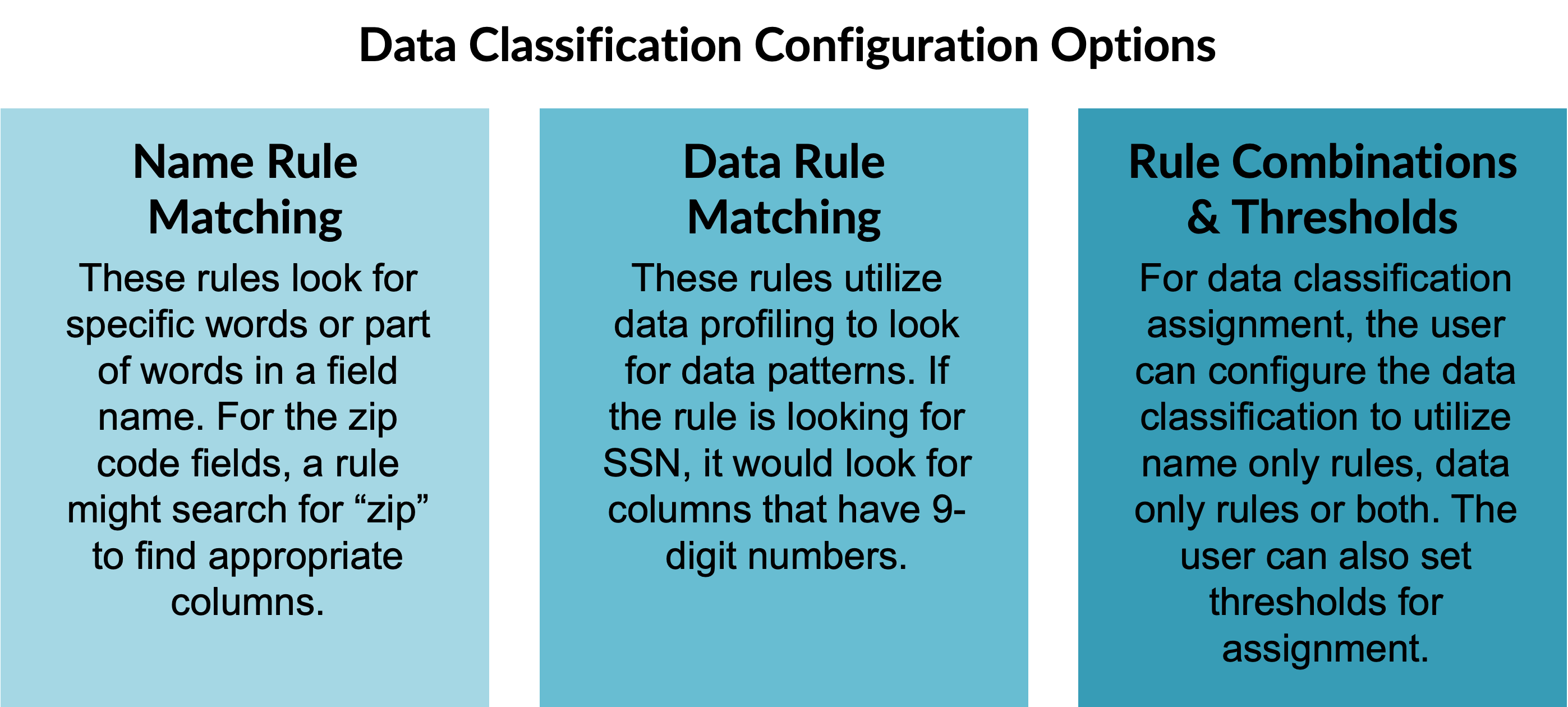Out-of-the-box data classifications are a great start to find your data but sometimes need deeper validation, as they can find hundreds of false positives in their initial tests. Prominence Advisors helps your organization rapidly iterate, validate, and deploy data classification solutions.
Whether you already have Data Governance technology or are in the market for a new data catalog tool, Prominence Advisors can set your organization up for strategic success.
Out-of-the-box solutions are a great start, but need deeper validation to ensure the classification works in your environment given differences in data structure and content unique to your organization.

See how the Prominence Advisors team assisted Providence with data classification, empowering them to do more with their data.
Watch the webinar to see how we were able to give this organization confidence in the accuracy of their data by reducing their false positive rate to zero!


- Operationalize privacy policies through providing transparency at the data element level
- Identify appropriate error thresholds for the specific use case
- Utilize test data to validate rules prior to implementation
Watch our webinar to see how we helped Providence establish successful Data Classification:
What is a Data Catalog?
- A data catalog organizes and inventories data assets within an organization. It serves as a powerful, centralized location to catalog key metadata associated with data assets.
Why use a Data Catalog?
- Utilizing a data catalog allows you to understand the impacts and lineage across your data.It also helps you collect, organization, access and enrich data to support data discovery, self-service, and governance.
What Data Catalog options exist?
- Numerous options exist, like tack-specific catalogs (Purview, Databricks Data Unity) and enterprise platforms (Informatica and Collibra).
What does "Data Classification" mean?
- Data classification in healthcare IT refers to the process of categorizing sensitive and non-sensitive information within the healthcare industry. This helps organizations prioritize security measures and compliance requirements. By assigning labels such as "confidential," "restricted," and "public" to data, healthcare providers can effectively manage access, storage, and sharing of patient information while ensuring compliance with regulations like HIPAA.
Why is Data Classification important for Healthcare Organizations?
- Data classification is crucial for healthcare organizations to safeguard patient privacy, maintain regulatory compliance, and manage data effectively. By properly classifying data, organizations can control who has access to sensitive medical records and protect against unauthorized disclosures. This proactive approach not only enhances patient trust but also prevents costly breaches and legal consequences.
How does Data Classification contribute to HIPAA Compliance?
- Data classification directly supports HIPAA compliance by enabling healthcare entities to identify, categorize, and protect sensitive patient data. Proper classification ensures that only authorized personnel can access and handle confidential medical records, reducing the risk of data breaches. Implementing data classification aligns with HIPAA's Security Rule, which mandates safeguarding electronic protected health information (ePHI).
How can Prominence Advisors assist with Data Classification?
- Prominence Advisors specializes in guiding healthcare organizations through the process of data classification. We offer expert advice on developing tailored data classification frameworks, selecting appropriate labeling systems, and implementing robust security controls. Our consultants are well-versed in healthcare regulations and can help you achieve seamless data classification while ensuring compliance with industry standards.
Set your organization up for long-term, scalable success with a strong Data Governance foundation. Our team of experts has helped some of healthcare's largest organizations to align their people, processes, and technology, giving them 100% trust in their data.
Our team of Epic veterans, with an average of 10 years of experience and certifications in every module, is ready to lead your organization through your next Epic implementation.
